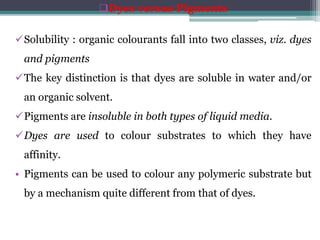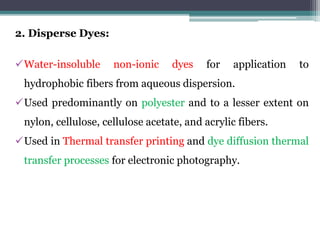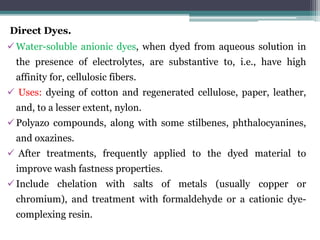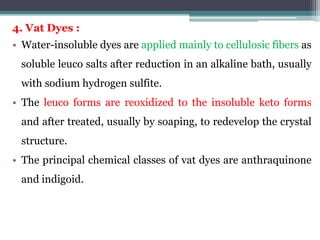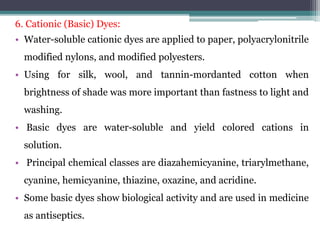Dyes are colored organic compounds that can impart color to substrates like cloth, paper, plastic or leather. There are several types of dyes classified by their chemistry and application method. Reactive dyes are widely used for cotton dyeing due to their high washfast properties. Disperse dyes are used predominantly on polyester fibers. Direct dyes are water-soluble and used for cotton and cellulose. Vat dyes are applied to cellulosic fibers from a soluble leuco form. Sulfur dyes provide good washfastness for economical cotton dyeing.








